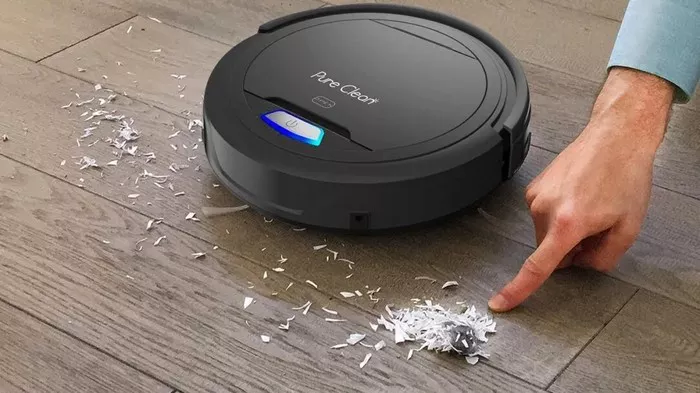When it comes to household cleaning, one of the most crucial decisions consumers face is choosing between bagged and bagless vacuum cleaners. The fundamental difference lies in their waste collection systems, with bagged models utilizing replaceable bags to contain dirt and debris, while bagless variants employ a canister that requires emptying. This seemingly minor discrepancy can have significant implications for users in terms of convenience, cleanliness, and even environmental impact.
Pros and Cons of Each Type
Bagged vacuum cleaners offer several advantages that cater to specific user needs. The self-sealing nature of bags prevents dust and allergens from escaping during disposal, making them an excellent choice for individuals with allergies or sensitivities. Moreover, emptying a bagged vacuum is typically less messy compared to its bagless counterpart, as the entire bag can be removed and disposed of without scattering dirt particles. Additionally, since the dirt is contained within the bag, bagged vacuum cleaners tend to remain cleaner on the outside, requiring less frequent exterior cleaning.
On the other hand, bagless vacuum cleaners boast their own set of benefits. One of the primary advantages is the elimination of ongoing bag purchases, potentially resulting in long-term cost savings for users. Furthermore, the transparent canister design allows users to visually monitor the accumulation of dirt, facilitating timely emptying and preventing loss of suction. This transparency also provides a sense of satisfaction for users, as they can witness the immediate results of their cleaning efforts.
Performance and Suction
When comparing performance and suction between bagged and bagless vacuum cleaners, it’s essential to consider various factors that can influence cleaning efficiency. While both types can deliver powerful suction, bagged models may have a slight edge due to the consistent airflow provided by sealed bags. This consistency ensures that suction power remains constant, even as the bag fills up. In contrast, bagless vacuums may experience a decline in suction as the canister becomes fuller, although advanced cyclonic technology has mitigated this issue to a significant extent in recent years.
Maintenance and Upkeep
Maintenance requirements play a crucial role in the overall user experience of vacuum cleaners. Bagged vacuum cleaners necessitate regular replacement of bags, which can add to long-term operating costs. Conversely, bagless models require periodic cleaning of filters and canisters to maintain optimal performance. While this may seem more involved, it eliminates the recurring expense of purchasing replacement bags, potentially balancing out the maintenance costs over time.
Cost Comparison
In terms of cost, the initial purchase price of bagged and bagless vacuum cleaners can vary depending on factors such as brand, features, and technology. However, the long-term cost implications differ significantly between the two types. Bagged vacuum cleaners incur ongoing expenses for replacement bags, which can accumulate over time. In contrast, bagless models may have higher upfront costs but offer savings in the form of no bag purchases. When considering the total cost of ownership, including maintenance and consumables, users should weigh these factors against their budget and preferences.
Environmental Impact
The environmental impact of vacuum cleaners extends beyond their performance and cost considerations. Bagged vacuum cleaners contribute to waste generation through the disposal of used bags, which end up in landfills. In contrast, bagless models offer a potential reduction in waste generation since they eliminate the need for disposable bags. However, the manufacturing and disposal of plastic components in bagless vacuums also pose environmental concerns. Ultimately, users concerned about environmental sustainability should consider factors such as material composition, energy efficiency, and product lifespan when making their choice.
Allergy Considerations
For individuals with allergies or respiratory conditions, indoor air quality is a critical concern when selecting a vacuum cleaner. Bagged vacuum cleaners excel in containing dust and allergens within sealed bags, minimizing their release into the air during disposal. This feature can significantly improve indoor air quality and alleviate allergy symptoms for sensitive users. While bagless models may offer comparable filtration systems, the process of emptying the canister may expose users to airborne particles, potentially aggravating allergies or asthma.
Ease of Use
The ease of handling, emptying, and cleaning are essential factors that influence the user experience of vacuum cleaners. Bagged vacuum cleaners typically offer straightforward operation, as users only need to replace the bag when full. However, the process of purchasing and installing replacement bags can be perceived as an inconvenience by some users. In contrast, bagless vacuum cleaners simplify maintenance by eliminating the need for bags, but users must empty the canister manually, which can be messy if not done carefully.
Latest Trends and Innovations
In recent years, vacuum cleaner manufacturers have introduced innovative features and technologies to enhance the user experience. One notable trend is the integration of smart technology, allowing users to control and monitor their vacuum cleaners remotely via smartphone apps. Additionally, advancements in filtration systems, such as HEPA filters and multi-stage filtration, have improved allergen containment and indoor air quality. Furthermore, lightweight and cordless designs have made vacuuming more convenient and accessible for users seeking mobility and flexibility.
User Reviews and Ratings
User reviews and ratings provide valuable insights into the real-world performance and reliability of vacuum cleaners. While individual experiences may vary, trends in user feedback can help potential buyers make informed decisions. Overall, bagged vacuum cleaners are often praised for their superior allergen containment and ease of disposal, while bagless models receive acclaim for their cost-saving benefits and transparent dirt canisters. However, user satisfaction ultimately depends on factors such as cleaning preferences, lifestyle, and specific cleaning needs.
Conclusion
In conclusion, the choice between bagged and bagless vacuum cleaners ultimately depends on individual preferences, priorities, and cleaning requirements. Bagged models offer superior allergen containment and cleanliness but require ongoing bag purchases. Bagless models, on the other hand, eliminate the need for bags and offer potential cost savings, albeit with increased maintenance tasks. By considering factors such as performance, maintenance, cost, and environmental impact, users can select the vacuum cleaner that best suits their needs and lifestyle.

